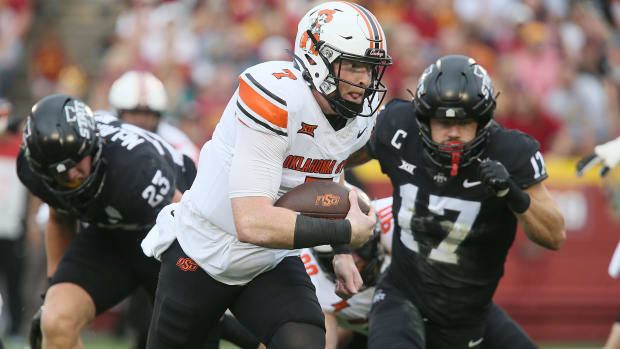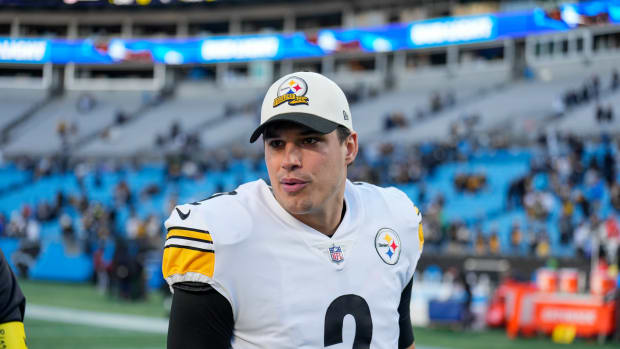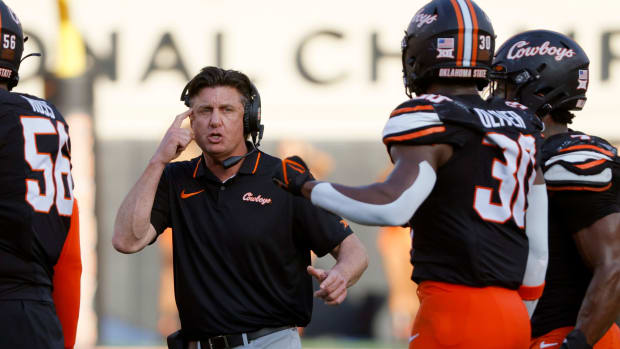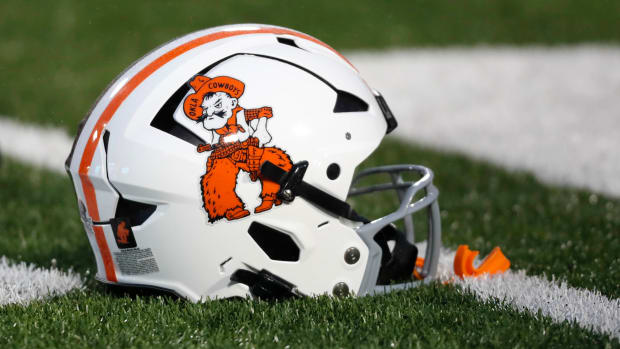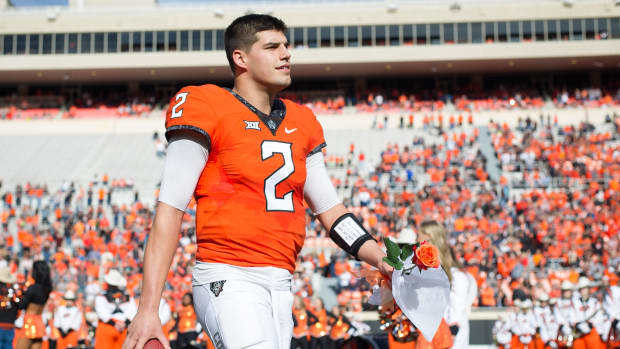Was the Early Approach the Wrong or Right Way for Cowboy Football?
STILLWATER -- The news came out starting on Tuesday night when All-Big 12 second team linebacker Amen Ogbongbemiga announced on Twitter that he had contracted COVID-19. He later followed it up with the Twitter message below. It turns out that Ogbongbemiga had tested previously before officially reporting with teammates on Monday and was negative with that test. However, Monday and after spending time in Tulsa at some of the protests for Black Lives Matter and to demonstrate dissatisfaction with the treatment of African-Americans at the hands of police and all social injustice, Ogbongbemiga wound up with the coronavirus. Two other Oklahoma State players tested positive for the COVID-19 after arriving with other teammates on Monday.
Oklahoma State is doing everything by the book with their protocols for re-entering student-athletes onto the campus, into the program, and into the facilities. Those three players that tested positive. The school will not confirm that one is Ogbongbemiga, but it sure looks obvious. Those tests go on record, so for Payne County those are the first three positive tests for COVID-19 in over a month.
Today on the radio on Triple Play Sports, concerned Stillwater residents were wondering at what cost is Oklahoma State bringing football back? Meanwhile on a Zoom call with media, Oklahoma football head coach Lincoln Riley was applauding himself and his administration for sticking to their original thinking and waiting until the first of July to bring football student-athletes back to Norman.
"The thing I'm proud of is we didn't wait for somebody else to do it," Riley said of the decision at Oklahoma. "We didn't wait for somebody to tell us what we could do. We just did simply what we thought was best. Then when our competitors said they're bringing them back early, we didn't flinch."
It certainly looks good. Oklahoma has no positive tests for the virus, but they also haven't tested anybody. Mike Gundy has not commented on what his program did and he has not done any media since the teleconference he did in early April that he caught all kinds of flack over. Meanwhile, a lot of what he said has come to fruition, albeit the time table was off about a month.
I have had several "shop talk" conversations with Gundy. One of the reasons he wanted to begin bringing his team back early and in phases was the difficulty in testing so many athletes at once. The coaching staff, support staff, administration, and anyone that would be in contact with the players were tested last week (Friday). It was over 120 individuals. Then just over 30 players that came in on Monday were tested. A lot of tests.
"We're going to have positive tests," Gundy told me back in May. "I think it could be anywhere from five-to-eight percent. It's going to happen, but that is why we have the protocols and why we will quarantine them, monitor them, and get them past the virus. It may take us awhile to have everybody on even ground and ready to get to work."
That was Gundy the profit, although he was off by the percentage of positive tests. Unfortunately, he may be right on when it is just student-athletes being tested.
Marshall University reported just before Oklahoma State on Wednesday morning that they had two positive tests by football student-athletes and one positive for a university employee.
The SEC schools, Ohio State, and Clemson are bringing in student-athletes and I would bet they will all have some positive tests. With many of these athletes as the case was reported with the three at Oklahoma State, they are asymptomatic and don't even know they have the virus. They show no symptoms.
Here are my thoughts after the last several days. I am not a medical professional. I don't play one on the radio. I am merely commenting as a sportscaster and sports writer that has seen a lot in my day.
1. Every school is likely going to have some positive tests. Lincoln Riley can wait, but unless there is a vaccine for the coronavirus before OU reports then they are likely going to have some of the same re-entry issues all schools will deal with.
2. You need to bring in your athletes and take your time. Oklahoma State is now backing up there next group a full week and the final group will likely wait until June 15 to come in. That is the date that workouts can begin for Big 12 schools. Some players may get workouts in, but not all of them.

It there are going to be moments like this in the coming months then athletes are going to have to be very disciplined about where they go and who they come in contact with.
USA Today Sports Images
3. Finally, to get a full, complete, and competitively balanced football season in will be difficult. It will be up to football players, the student-athletes will decide how much or how little season is played at each school. It will take discipline. Players, once they are cleared will need to limit their outside exposure. They are going to have to sacrifice social events and fun, parties and outside relationships. Teams will need to stick together and be a community for the football season. Unless there is a cure, players will have to sacrifice some of the fun of being a college athlete in order to play their sport this fall. One player with the COVID-19 and the tracing of potential exposure can take down a team, especially one that has the talent to win a championship.
